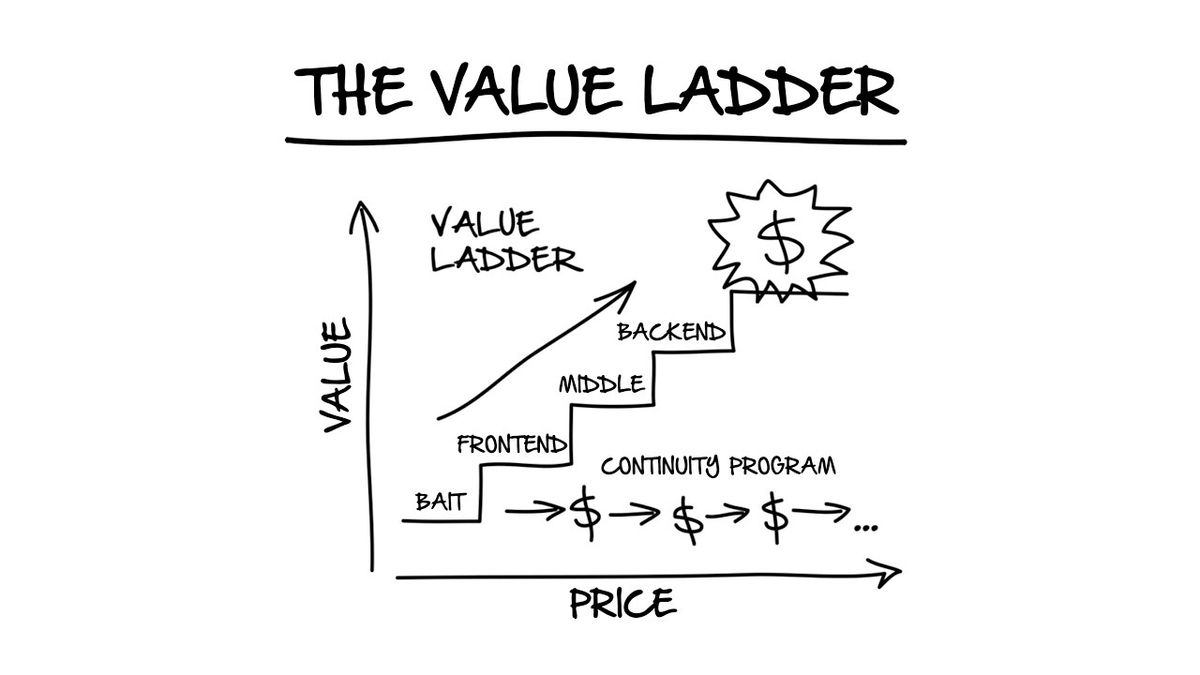Why You Should Care About the Value Ladder

Suppose you're an entrepreneur or e-commerce seller looking to increase customer engagement, loyalty, and revenue. In that case, you should look at how the concept of a value ladder can help achieve those goals. Not all customers are created equal, and understanding this fact is crucial in developing successful strategies designed to build sales growth over time. However, it can help generate leads as you learn more about your customer base. This is a rich area to explore!
1. What is the value ladder, and why should you care about it?
The value ladder is a crucial component of any successful business plan that involves mapping out the value your business can provide to clients to meet their needs and eventually lead to more significant conversions in the business-client relationship– in other words, as the customer pays more, you offer more value in a step-by-step fashion.
This strategy will allow you to offer your customers more value and ensure they're getting what they need out of their relationship with your business. Remember that your value ladder is tailored specifically to fit your customer base and the services you offer, and it pays off.
The value ladder can help generate profit without having to focus on getting new customers, as it’s a process in which you engage with existing customers to increase the value you offer and the level of investment they put into your products. Trust is the most challenging part; you have already established it best with your existing customers.
2. The different levels of the value ladder and what they mean for your business
The value ladder can be broken down into three levels of value - basic value, advanced value, and premium value (frontend, middle and backend). Basic value focuses on providing the core components of your services; advanced value adds additional value to those core components; and premium value allows customers to access VIP services that go above and beyond.
Think about your personal shopping experience and the relationship you have built with brands over time. The interactions between you and the brand in mind are, more likely than not, carefully planned to help convert you over time. First, it might be a (FREE!) tool that is genuinely helpful to you. Because the value is being established with no investment, you might feel more inclined to purchase something the next time you receive an email or SMS message from them. The trust is being established, so you buy a membership to an exclusive community. When you, as the customer, feel that this membership has legitimate benefits, you might then be ready to purchase individual coaching sessions with the founder of the brand.
3. How to move up the value ladder and increase your profits
It becomes easy to see how the value ladder is about establishing a mutually beneficial relationship, and the base of that relationship is ensuring fair value for the customer. It’s up to you to “build” the value ladder to make it worthwhile to the customer.
The value ladder describes levels between a customer’s basic need (a level they cannot do without a product) to their ultimate desire (which goes beyond the need). Moving up each level of the value ladder entails providing value for consumers’ time and money. Each step you take towards understanding your client's wants, needs, and desires leads to increased sales and higher profits. Letting customers know you value their time will strengthen trust in the relationship and encourage them to return with more custom. If you value your customers, they will value you—that is the goal of making a profit!
6. Are you climbing the ladder successfully?
Evaluating the success of your value ladder can be a tricky process. First and foremost, you need to consider whether your value ladder is satisfying your clients' needs. Do they find value in what your business is offering them? Additionally, look at your clients' wants - are they getting value out of the extra packages you offer, or is it mostly just dust collecting on virtual shelves? Additionally, think about the customer relationship - are they happy when they land on that page and do they return for more? Finally, examine if there's profit associated with each step of the value ladder - how much income are you bringing in with each component?
There is hard data to help evaluate all of these questions above. Gather analytics across all sites you use to communicate and sell to your customers and assess what works.
As you can see, implementing a value ladder in your business is vital to increase customer engagement, loyalty, and revenue. By understanding consumer behavior and mapping out optimal product offerings for each segment of customers, you can leverage targeted promotions based on individual interests, which will move your business up the success ladder.





